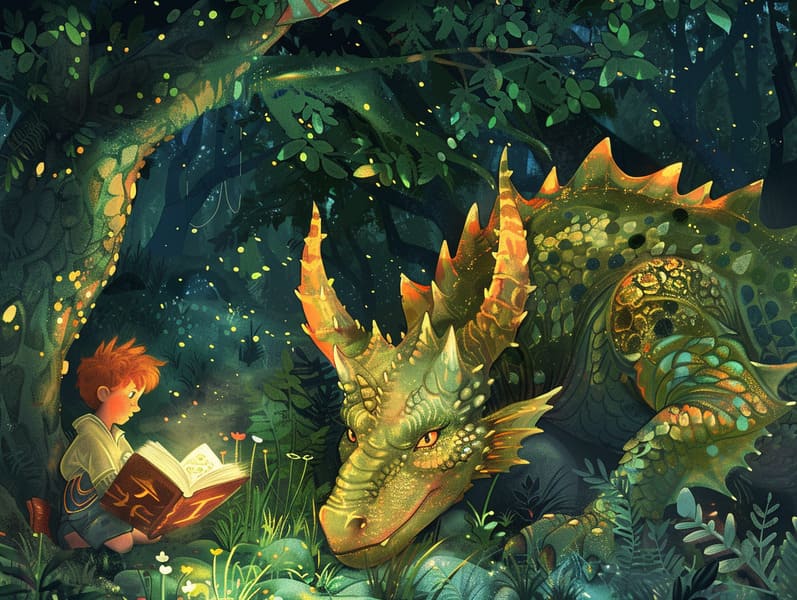The Start of Ancient Fairy Tales with Their Unending Magic.
The Start of Ancient Fairy Tales with Their Unending Magic.
Blog Article

Classic fairy tales have timeless appeal. These stories have been spoken from one generation to the next well before they were ever documented. They were born from a variety of backgrounds, including Eastern traditions. They were initially disseminated among mature audiences, often carrying themes and messages pertaining to the societal norms and beliefs of the time.
The renowned Brothers Grimm, Jacob and Wilhelm, were among the first to gather many of these beloved stories. Their compilation, "Grimm's Folk Tales," included tales like "Cinderella," "The Bread Crumb Trail," and "Schneewittchen," which have since become essentials in the world of children's fairy tales. Similarly, Hans Andersen's fanciful narratives, such as "The Mermaid," and "The Duckling that Could," have enchanted hearts worldwide, securing their place in the pantheon of classic fairy tales.
Even though they are old, traditional fairy tales remain as impactful as ever, especially as children's night stories. These whimsical stories are now available in diverse formats, including gorgeously illustrated books, captivating animations, and online storybooks.
Their lasting appeal can be connected to several charming aspects:
Moral Lessons: Ancient fairy tales often share important moral lessons. Fairy tales like "The Boy Who Cried Wolf" teach the importance of sincerity, while "The Tale of the Tortoise and the Hare" point out the values of tenacity and unassuming nature. These tales offer kids clear distinctions between truth and falsehood, guiding their moral compass in a gentle yet profound way.
Compassion and Insight: Traditional fairy tales frequently feature protagonists facing obstacles and hardships, stimulating audiences to feel with their struggles and rally behind their triumphs. For instance, "The Story of Beauty and the Beast" points out the necessity of appreciating inner worth to acknowledge the inner spirit of a soul, encouraging tenderness and appreciation.
Cultural Understanding: Many ancient fairy tales are infused with the cultural contexts from which they emerged. Learning from these fairy tales can provide enlightening views into different customs, nurturing a sense of international awareness and recognition.
Fantasy and Innovation: The magical elements in timeless fairy tales—magical kingdoms—activate children’s visions. These fairy tales carry readers to fantastical realms, activating creative ideas and a sense of fascination that persists a lifetime.
Classic fairy tales are not only charming but also pedagogical. They function as alluring tools in cultivating various mind and heart abilities in young ones. When traditional fairy tales are narrated, they boost speech development by teaching new lexicon and complex sentence structures. This practice also enhances listening abilities and mental focus, as little ones listen intently, anticipating to see what happens next.
Furthermore, deliberating the themes and characters of ancient fairy tales can sharpen thought processes and analytical skills. Little ones are shown to identify patterns, guess what will happen, and know cause and effect. These reflections also advance kids utter their thoughts and feelings, boosting their emotional intelligence.
In today’s technological age, the accessibility of online storybooks has made these stories more acquirable than ever. Websites and online apps present vast collections of old fairy tales that can be viewed or played anytime, anywhere. Fairy tales spoken are particularly widespread, featuring an entertaining method for children to be a part of these fantastical tales. Read-aloud stories and read-out-loud videos transport characters and settings to life, often enhanced by entrancing soundtracks and instrumentals that intensify the story adventure.
The unfading fascination of old fairy tales lies in their ability to adjust to modern days while keeping their essential themes. Contemporary reinterpretations of these fairy tales often feature more varied figures and modern settings, making them pertinent to today’s audience. However, the fundamental themes of boldness, kindness, and fair-mindedness remain unchanged, continuing to appeal to children of all ages.
Old fairy tales also offer a sense of comfort and comprehensibility. They extend a systematic narrative with a apparent beginning, middle, and end, often finishing with the solving of conflicts and the triumph of right over wrong. This foreseeability can be relieving for young ones, extending a sense of security in an dynamic world.
Old fairy tales continue to mesmerize and teach new generations, maintaining their delight and value in modern society. As children's bedtime stories, they present to a perfect blend of allure and teaching, backing moral values, empathy, and creativity. The abundance of online fairy tales and the widespread nature of fairy tales read aloud certify that these classic narratives remain attainable to new generations.
By sustaining and imparting these tales, we continue to treasure the rich tapestry of cultural heritage and cultural heritage. Whether you are seeing a colorful picture book, enjoying a digital collection, or playing an read-aloud story, the captivation of bedtime fairy tales is always within reach. These stories illustrate of the these guys perpetual effect of fairy tales and its ability to unite us across centuries and lands.
No matter if you are experiencing a colorful picture book, accessing a web-based collection, or listening through an read-aloud book, the radiance of popular fairy tales is always within reach.
These fairy tales point out of the unchanging strength of storytelling and its ability to unite us across eras and regions, weaving a spell that charms and informs alike.